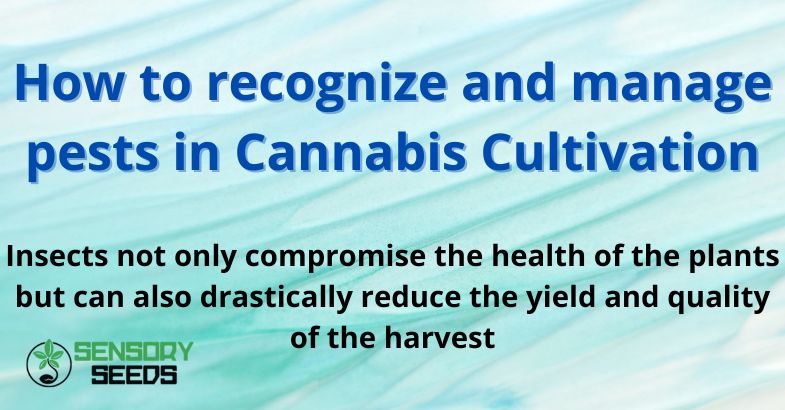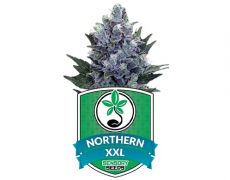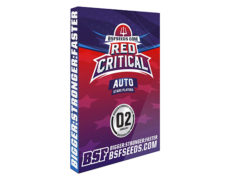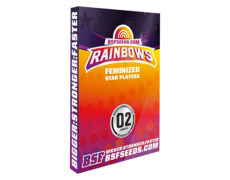Published on: 17/01/2025
Insects not only compromise the health of the plants but can also drastically reduce the yield and quality of the harvest
In this article, we will explore how to identify the most common harmful insects, understand the signs of their presence, and adopt effective strategies to manage them sustainably.
Why are insects a threat to cannabis?
Insects are attracted to cannabis plants for several reasons: nectar, juicy leaves, and even the roots represent a valuable resource for many species. However, the main problem is not just the insects’ feeding, but also the diseases they can transmit. Some insects act as vectors for pathogens such as viruses, bacteria, or fungi, increasing the risk of contamination that can devastate an entire crop.
Additionally, many infestations begin almost imperceptibly. Insects hide on the underside of leaves, in soil folds, or even in the roots, making timely intervention difficult. This is why it is essential to know the characteristics of each pest species to act before the problem worsens
The most common harmful insects in cannabis cultivation
Among the most formidable enemies for cannabis growers are:
- Aphids: Small, soft-bodied insects that feed on the sap of plants. They are typically found in colonies on the undersides of leaves. Aphids cause yellowing, leaf deformation, and release honeydew, a sugary substance that promotes the growth of molds like sooty mold.
- Red Spider Mite: These microscopic arachnids are known for their ability to create thin webs on leaves. Their attack is manifested by yellow or white specks on the leaves, which gradually dry out and fall off.
- Thrips: Long and slender, thrips feed by piercing the cells of leaves, causing silvery spots and deformation. They are particularly problematic in indoor cultivation.
- Whitefly: Small winged insects that suck sap. Their presence is easily noticed by the frantic activity they generate when the plants are shaken. Like aphids, they release honeydew that attracts molds.
- Larvae and Caterpillars: These pests primarily attack leaves and buds. Lepidopteran larvae, for example, can destroy entire sections of the plant in a short amount of time.
- Fungus Gnats: Small flies that infest the soil and lay eggs near the roots. The larvae feed on the root tissue, causing water stress and slowing down the plant’s growth.
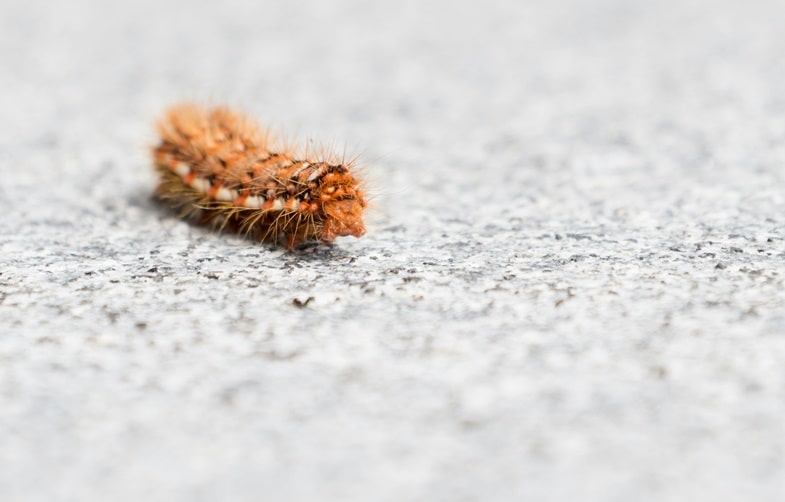

How to recognize an infestation
One of the first steps in managing harmful insects is to recognize their signs before the situation becomes critical. Here are some key indicators:
- Yellowing or spotted leaves: often a sign of sap sucking or cell perforation.
- Webbing: almost certainly indicates the presence of spider mites.
- Leaf deformations: bending, curling, or perforations may indicate thrips or aphids.
- Sticky residue: honeydew left by aphids or whiteflies.
- Slowed growth: a symptom of root attacks or general stress caused by severe infestations.
- Visible insects: in some cases, careful inspection of the leaves, soil, and stems directly reveals the insects.
Read also : How to identify and solve nutritional problems in cannabis plants
Prevention strategies
Preventing an infestation is always better than treating it. Preventive measures are based on a combination of good cultivation practices and constant monitoring.
Regular monitoring
Regular inspection of plants is essential. Use a magnifying glass to examine the underside of leaves and less visible areas of the plant. Monitor the soil for fungus gnats or other larvae.
Cleaning the growing environment
In indoor cultivation, maintaining a clean environment reduces the risk of infestations. Sterilize tools and use clean or heat-treated soil.
Use of companion plants
Some plants, such as marigold or basil, can repel harmful insects. Placing them near cannabis plants creates a natural barrier against pests.
Respect the weather conditions
Insects thrive in specific temperature and humidity conditions. Adjusting these parameters, especially in indoor environments, helps prevent their proliferation.
Natural solutions
When dealing with ongoing infestations, biological methods offer a sustainable and effective solution. Here are some strategies:
- Natural predators: Introducing beneficial insects such as ladybugs, lacewing larvae, or nematodes that feed on pests.
- Insecticidal soap: A gentle solution that suffocates pests without harming the plant.
- Neem oil: A natural remedy that acts as both a repellent and insecticide. It should be applied carefully to avoid harming plants during the flowering stage.
- Garlic and chili extracts: Homemade preparations can be used as sprays to keep insects away.
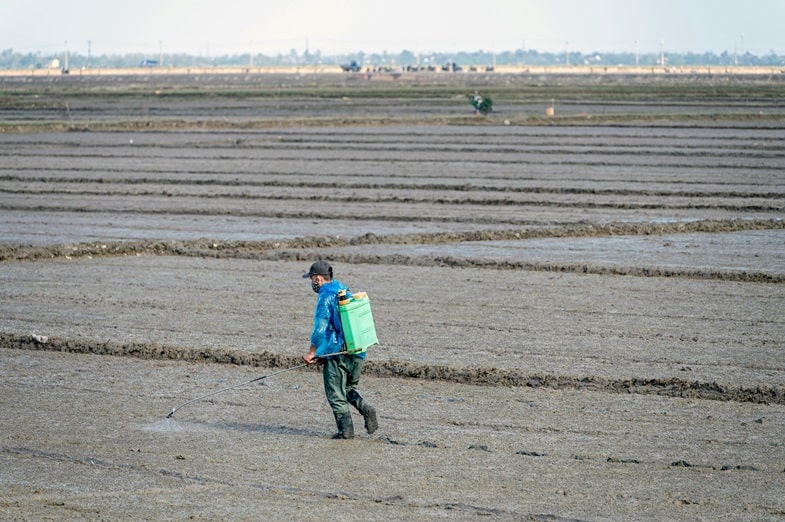

When are chemical approaches necessary?
Despite the preference for natural solutions, in some cases, a chemical approach may become necessary, especially in the presence of advanced infestations. It’s important to choose products specifically designed for cannabis, carefully follow the instructions, and adhere to the withdrawal periods to ensure the safety of the harvest.
Among the most commonly used products are systemic insecticides, pyrethroids, or growth regulators. However, it is crucial to balance effectiveness with the risk of contaminating the final product.
Read also : What cannabis fertilizers are and how to use them
What to do after you have exterminated the insects?
Once the insects have been eliminated, the plants may have suffered significant damage. Recovery requires time and proper care. Pruning the damaged parts is the first step in preventing secondary infections. Adding fertilizers rich in potassium and phosphorus helps stimulate growth and strengthen the plants.
Additionally, constantly monitoring for residual insects is crucial to prevent recurrence.
Conclusion
Recognizing the early signs, adopting preventive measures, and using sustainable methods are the cornerstones of effective pest management. With constant monitoring and timely intervention, it is possible to protect plant health and ensure a high-quality harvest.

